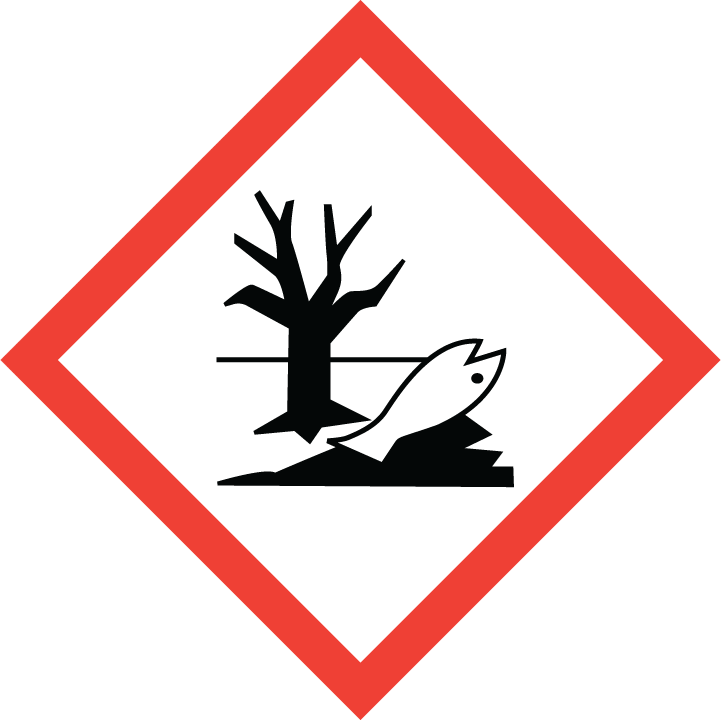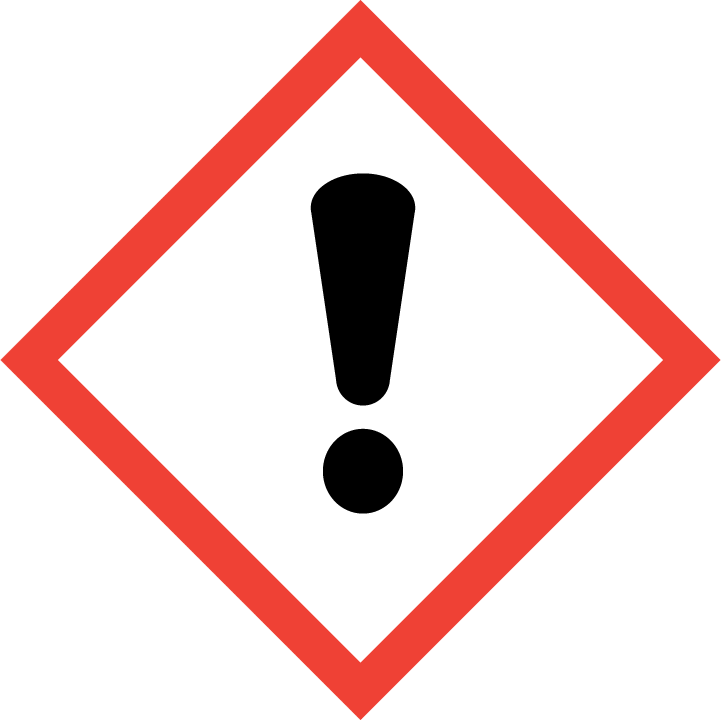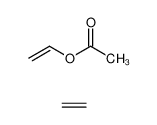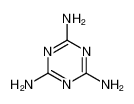| Product name | dodecan-1-ol |
|---|
| Product number | - |
|---|---|
| Other names | Dodecyl Alcohol |
| Identified uses | For industry use only. Fragrances;Solvents |
|---|---|
| Uses advised against | no data available |
| Company | MOLBASE (Shanghai) Biotechnology Co., Ltd. |
|---|---|
| Address | Floor 4 & 5, Building 12, No. 1001 North Qinzhou Road, Xuhui District, Shanghai, China |
| Telephone | +86(21)64956998 |
| Fax | +86(21)54365166 |
| Emergency phone number | +86-400-6021-666 |
|---|---|
| Service hours | Monday to Friday, 9am-5pm (Standard time zone: UTC/GMT +8 hours). |
Eye irritation, Category 2
Hazardous to the aquatic environment, short-term (Acute) - Category Acute 1
Hazardous to the aquatic environment, long-term (Chronic) - Category Chronic 2
2.2 GHS label elements, including precautionary statements| Pictogram(s) |   |
|---|---|
| Signal word | Warning |
| Hazard statement(s) | H319 Causes serious eye irritation H400 Very toxic to aquatic life H411 Toxic to aquatic life with long lasting effects |
| Precautionary statement(s) | |
| Prevention | P264 Wash ... thoroughly after handling. P280 Wear protective gloves/protective clothing/eye protection/face protection. P273 Avoid release to the environment. |
| Response | P305+P351+P338 IF IN EYES: Rinse cautiously with water for several minutes. Remove contact lenses, if present and easy to do. Continue rinsing. P337+P313 If eye irritation persists: Get medical advice/attention. P391 Collect spillage. |
| Storage | none |
| Disposal | P501 Dispose of contents/container to ... |
none
3.Composition/information on ingredients 3.1 Substances| Chemical name | Common names and synonyms | CAS number | EC number | Concentration |
|---|---|---|---|---|
| dodecan-1-ol | dodecan-1-ol | 112-53-8 | none | 100% |
Consult a physician. Show this safety data sheet to the doctor in attendance.
If inhaledFresh air, rest. Seek medical attention if you feel unwell.
In case of skin contactRemove contaminated clothes. Rinse and then wash skin with water and soap.
In case of eye contactRinse with plenty of water for several minutes (remove contact lenses if easily possible).
If swallowedRinse mouth. Rest. Do NOT induce vomiting. Seek medical attention if you feel unwell.
4.2 Most important symptoms/effects, acute and delayedLiquid will cause burning of the eyes and may irritate skin. (USCG, 1999)
4.3 Indication of immediate medical attention and special treatment needed, if necessary/SRP:/ Immediate first aid: Ensure that adequate decontamination has been carried out. If patient is not breathing, start artificial respiration, preferably with a demand-valve resuscitator, bag-valve-mask device, or pocket mask, as trained. Perform CPR as necessary. Immediately flush contaminated eyes with gently flowing water. Do not induce vomiting. If vomiting occurs, lean patient forward or place on left side (head-down position, if possible) to maintain an open airway and prevent aspiration. Keep patient quiet and maintain normal body temperature. Obtain medical attention. /Higher alcohols (>3 carbons) and related compounds/
5.Fire-fighting measures 5.1 Extinguishing media Suitable extinguishing mediaWear self contained breathing apparatus for fire fighting if necessary.
5.2 Specific hazards arising from the chemicalno data available
5.3 Special protective actions for fire-fightersWear self-contained breathing apparatus for firefighting if necessary.
6.Accidental release measures 6.1 Personal precautions, protective equipment and emergency proceduresUse personal protective equipment. Avoid dust formation. Avoid breathing vapours, mist or gas. Ensure adequate ventilation. Evacuate personnel to safe areas. Avoid breathing dust. For personal protection see section 8.
6.2 Environmental precautionsPersonal protection: filter respirator for organic gases and particulates adapted to the airborne concentration of the substance. Do NOT let this chemical enter the environment. Ventilation. Sweep spilled substance into sealable containers. If liquid: collect leaking liquid in containers. Absorb remaining liquid in inert absorbent. Then store and dispose of according to local regulations.
6.3 Methods and materials for containment and cleaning upAccidental Release Measures: ... Prevent further leakage or spillage if safe to do so. Do not let product enter drains. Discharge into the environment must be avoided.
7.Handling and storage 7.1 Precautions for safe handlingAvoid contact with skin and eyes. Avoid formation of dust and aerosols. Avoid exposure - obtain special instructions before use.Provide appropriate exhaust ventilation at places where dust is formed. For precautions see section 2.2.
7.2 Conditions for safe storage, including any incompatibilitiesCool. Well closed. Store in an area without drain or sewer access. Provision to contain effluent from fire extinguishing.Keep tightly closed. Store in a cool dry place.
8.Exposure controls/personal protection 8.1 Control parameters Occupational Exposure limit valuesno data available
Biological limit valuesno data available
8.2 Appropriate engineering controlsHandle in accordance with good industrial hygiene and safety practice. Wash hands before breaks and at the end of workday.
8.3 Individual protection measures, such as personal protective equipment (PPE) Eye/face protectionSafety glasses with side-shields conforming to EN166. Use equipment for eye protection tested and approved under appropriate government standards such as NIOSH (US) or EN 166(EU).
Skin protectionWear impervious clothing. The type of protective equipment must be selected according to the concentration and amount of the dangerous substance at the specific workplace. Handle with gloves. Gloves must be inspected prior to use. Use proper glove removal technique(without touching glove's outer surface) to avoid skin contact with this product. Dispose of contaminated gloves after use in accordance with applicable laws and good laboratory practices. Wash and dry hands. The selected protective gloves have to satisfy the specifications of EU Directive 89/686/EEC and the standard EN 374 derived from it.
Respiratory protectionWear dust mask when handling large quantities.
Thermal hazardsno data available
9.Physical and chemical properties| Physical state | Colorless liquid at room temperature or white, colorless crystalline solid below 24°C. Unpleasant fatty odor at high concentrations, floral odor at low concentrations. |
|---|---|
| Colour | Leaflets from dilute alcohol |
| Odour | CHARACTERISTIC FATTY ODOR; UNPLEASANT AT HIGH CONCN BUT DELICATE & FLORAL ON DILUTION |
| Melting point/ freezing point | 22-27ºC |
| Boiling point or initial boiling point and boiling range | 260-262°C(lit.) |
| Flammability | Combustible. |
| Lower and upper explosion limit / flammability limit | Flammability limits = 0.6 to 5.1 vol% |
| Flash point | 121°C |
| Auto-ignition temperature | 260°C |
| Decomposition temperature | no data available |
| pH | no data available |
| Kinematic viscosity | 18.8 mPa-s at 20°C |
| Solubility | In water:insoluble |
| Partition coefficient n-octanol/water (log value) | log Kow = 5.13 |
| Vapour pressure | 0.1 mm Hg ( 20 °C) |
| Density and/or relative density | 0.833g/mLat 25°C(lit.) |
| Relative vapour density | 7.4 (vs air) |
| Particle characteristics | no data available |
no data available
10.2 Chemical stabilityStable under recommended storage conditions.
10.3 Possibility of hazardous reactionsCombustible when it is exposed to heat or flame.DODECANOL is an alcohol. Flammable and/or toxic gases are generated by the combination of alcohols with alkali metals, nitrides, and strong reducing agents. They react with oxoacids and carboxylic acids to form esters plus water. Oxidizing agents convert them to aldehydes or ketones. Alcohols exhibit both weak acid and weak base behavior. They may initiate the polymerization of isocyanates and epoxides.
10.4 Conditions to avoidno data available
10.5 Incompatible materialsIncompatible materials: Strong oxidizing agents.
10.6 Hazardous decomposition productsWhen heated to decomposition it emits acrid smoke and fumes.
11.Toxicological information Acute toxicity- Oral: LD50 Rat oral 12,800 mg/kg
- Inhalation: LC50 Rat inhalation >1050 mg/cu m (138 ppm)
- Dermal: no data available
no data available
Serious eye damage/irritationno data available
Respiratory or skin sensitizationno data available
Germ cell mutagenicityno data available
Carcinogenicityno data available
Reproductive toxicityno data available
STOT-single exposureno data available
STOT-repeated exposureno data available
Aspiration hazardno data available
12.Ecological information 12.1 Toxicity- Toxicity to fish: LC50; Species: Pimephales promelas (Fathead minnow) weight 0.12 g; Conditions: flow-through bioassay, water hardness 45.5 mg/L CaCO3, temp: 25 +/- 1°C, pH 7.5, dissolved oxygen >60% of saturation; Concentration: 1.01 mg/L for 96 hr
- Toxicity to daphnia and other aquatic invertebrates: no data available
- Toxicity to algae: no data available
- Toxicity to microorganisms: no data available
AEROBIC: A 5-day theoretical BOD of 20% was observed for 1-dodecanol in an aerobic screening test using a sewage inoculum(1). A 5-day theoretical BOD of 23.2% was observed for 1-dodecanol in a standard BOD dilution test using a mixed microbial inoculum(2-3). A 5-day theoretical BOD of 27-29.7% was observed for 1-dodecanol in a standard BOD aerobic screening test using a sewage inoculum or an acclimated activated sludge inoculum(4); using a Warburg respirometer technique and a sewage inoculum, a 6-hr theoretical BOD of 15.2% was observed(4). Using a Warburg respirometer technique and various activated sludge inoculum, respective 6-hr, 12-hr and 24-hr theoretical BODs of 4.5, 10.1 and 13.4% were observed(5). 1-Dodecanol was found to be readily biodegraded(6).
12.3 Bioaccumulative potentialAn estimated BCF of 48 was calculated in fish for 1-dodecanol(SRC), using a log Kow of 5.13(1) and a regression-derived equation(2). According to a classification scheme(3), this BCF suggests the potential for bioconcentration in aquatic organisms is moderate(SRC).
12.4 Mobility in soilKoc values of 2042-3388 were reported for 1-dodecanol in humic acid(1). According to a classification scheme(2), this Koc range suggests that 1-dodecanol is expected to have slight mobility in soil. Koc values of 2570-6574, 2337-11,184, 7700 and 16,700-17,981 were reported for 1-dodecanol in activated sludge, sediment, suspended solids and suspended solids with activated sludge, respectively(1).
12.5 Other adverse effectsno data available
13.Disposal considerations 13.1 Disposal methods ProductThe material can be disposed of by removal to a licensed chemical destruction plant or by controlled incineration with flue gas scrubbing. Do not contaminate water, foodstuffs, feed or seed by storage or disposal. Do not discharge to sewer systems.
Contaminated packagingContainers can be triply rinsed (or equivalent) and offered for recycling or reconditioning. Alternatively, the packaging can be punctured to make it unusable for other purposes and then be disposed of in a sanitary landfill. Controlled incineration with flue gas scrubbing is possible for combustible packaging materials.
14.Transport information 14.1 UN Number| ADR/RID: UN3077 | IMDG: UN3077 | IATA: UN3077 |
| ADR/RID: ENVIRONMENTALLY HAZARDOUS SUBSTANCE, SOLID, N.O.S. |
| IMDG: ENVIRONMENTALLY HAZARDOUS SUBSTANCE, SOLID, N.O.S. |
| IATA: ENVIRONMENTALLY HAZARDOUS SUBSTANCE, SOLID, N.O.S. |
| ADR/RID: 9 | IMDG: 9 | IATA: 9 |
| ADR/RID: III | IMDG: III | IATA: III |
| ADR/RID: yes | IMDG: yes | IATA: yes |
no data available
14.7 Transport in bulk according to Annex II of MARPOL 73/78 and the IBC Codeno data available
15.Regulatory information 15.1 Safety, health and environmental regulations specific for the product in question| Chemical name | Common names and synonyms | CAS number | EC number |
|---|---|---|---|
| dodecan-1-ol | dodecan-1-ol | 112-53-8 | none |
| European Inventory of Existing Commercial Chemical Substances (EINECS) | Listed. | ||
| EC Inventory | Listed. | ||
| United States Toxic Substances Control Act (TSCA) Inventory | Listed. | ||
| China Catalog of Hazardous chemicals 2015 | Not Listed. | ||
| New Zealand Inventory of Chemicals (NZIoC) | Listed. | ||
| Philippines Inventory of Chemicals and Chemical Substances (PICCS) | Listed. | ||
| Vietnam National Chemical Inventory | Listed. | ||
| Chinese Chemical Inventory of Existing Chemical Substances (China IECSC) | Listed. | ||
| Creation Date | Aug 12, 2017 |
|---|---|
| Revision Date | Aug 12, 2017 |
- CAS: Chemical Abstracts Service
- ADR: European Agreement concerning the International Carriage of Dangerous Goods by Road
- RID: Regulation concerning the International Carriage of Dangerous Goods by Rail
- IMDG: International Maritime Dangerous Goods
- IATA: International Air Transportation Association
- TWA: Time Weighted Average
- STEL: Short term exposure limit
- LC50: Lethal Concentration 50%
- LD50: Lethal Dose 50%
- EC50: Effective Concentration 50%
- IPCS - The International Chemical Safety Cards (ICSC), website: http://www.ilo.org/dyn/icsc/showcard.home
- HSDB - Hazardous Substances Data Bank, website: https://toxnet.nlm.nih.gov/newtoxnet/hsdb.htm
- IARC - International Agency for Research on Cancer, website: http://www.iarc.fr/
- eChemPortal - The Global Portal to Information on Chemical Substances by OECD, website: http://www.echemportal.org/echemportal/index?pageID=0&request_locale=en
- CAMEO Chemicals, website: http://cameochemicals.noaa.gov/search/simple
- ChemIDplus, website: http://chem.sis.nlm.nih.gov/chemidplus/chemidlite.jsp
- ERG - Emergency Response Guidebook by U.S. Department of Transportation, website: http://www.phmsa.dot.gov/hazmat/library/erg
- Germany GESTIS-database on hazard substance, website: http://www.dguv.de/ifa/gestis/gestis-stoffdatenbank/index-2.jsp
- ECHA - European Chemicals Agency, website: https://echa.europa.eu/
































